A visit to a shrine turns into a very special time for photographers and other visitors keen on capturing or experiencing truly Japanese scenes, especially during the New Year and related festivities as the Japanese are getting ready for their traditional visit of their local Shinto shrine. To help capture these scenes, here is a simple but sufficient introduction to a fruitful visit of any shrine of any size or importance near your location.
Architecture
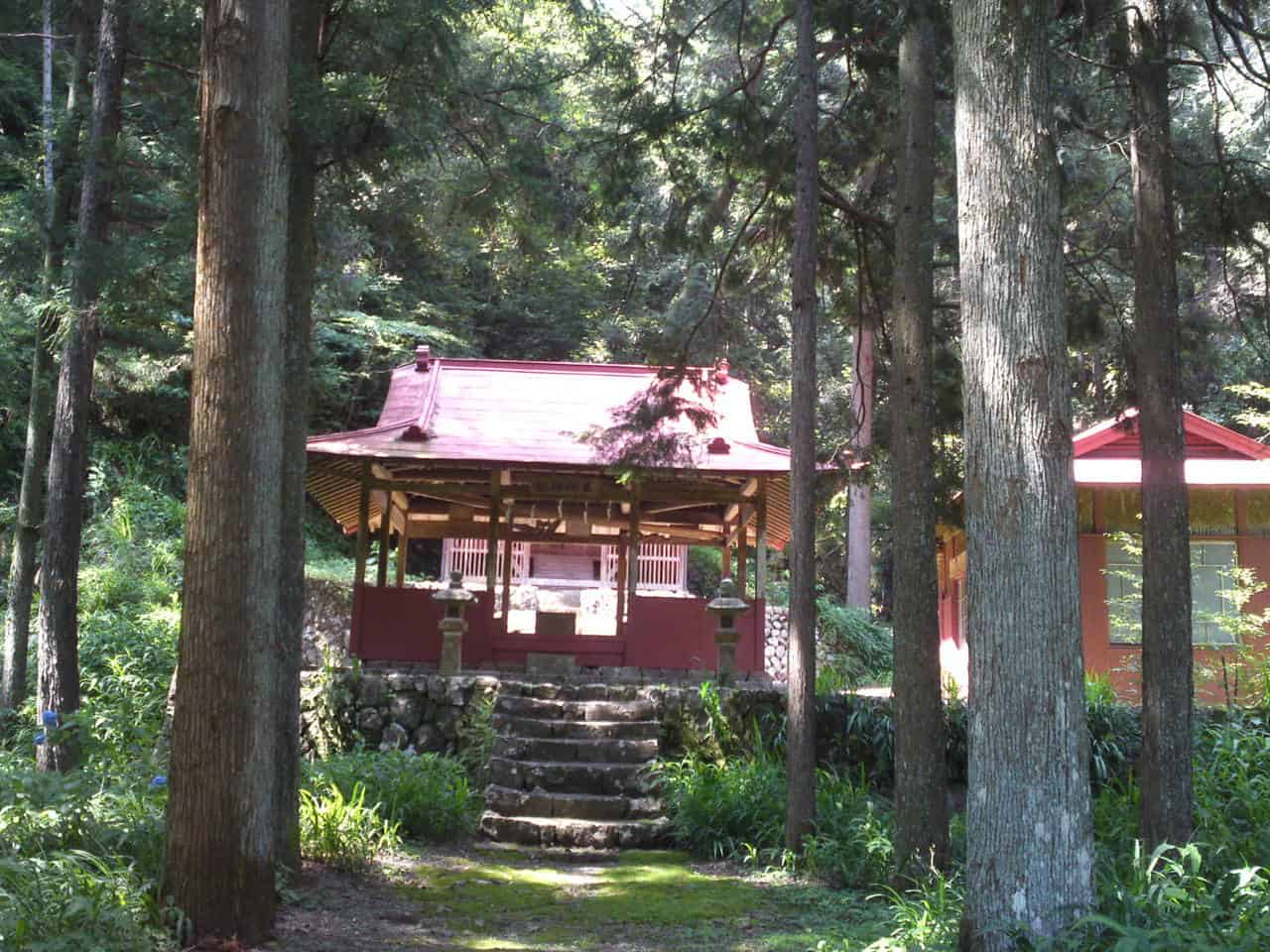
Ashitsuki Shrine lost in the trees in Ashikubo, Shizuoka City!
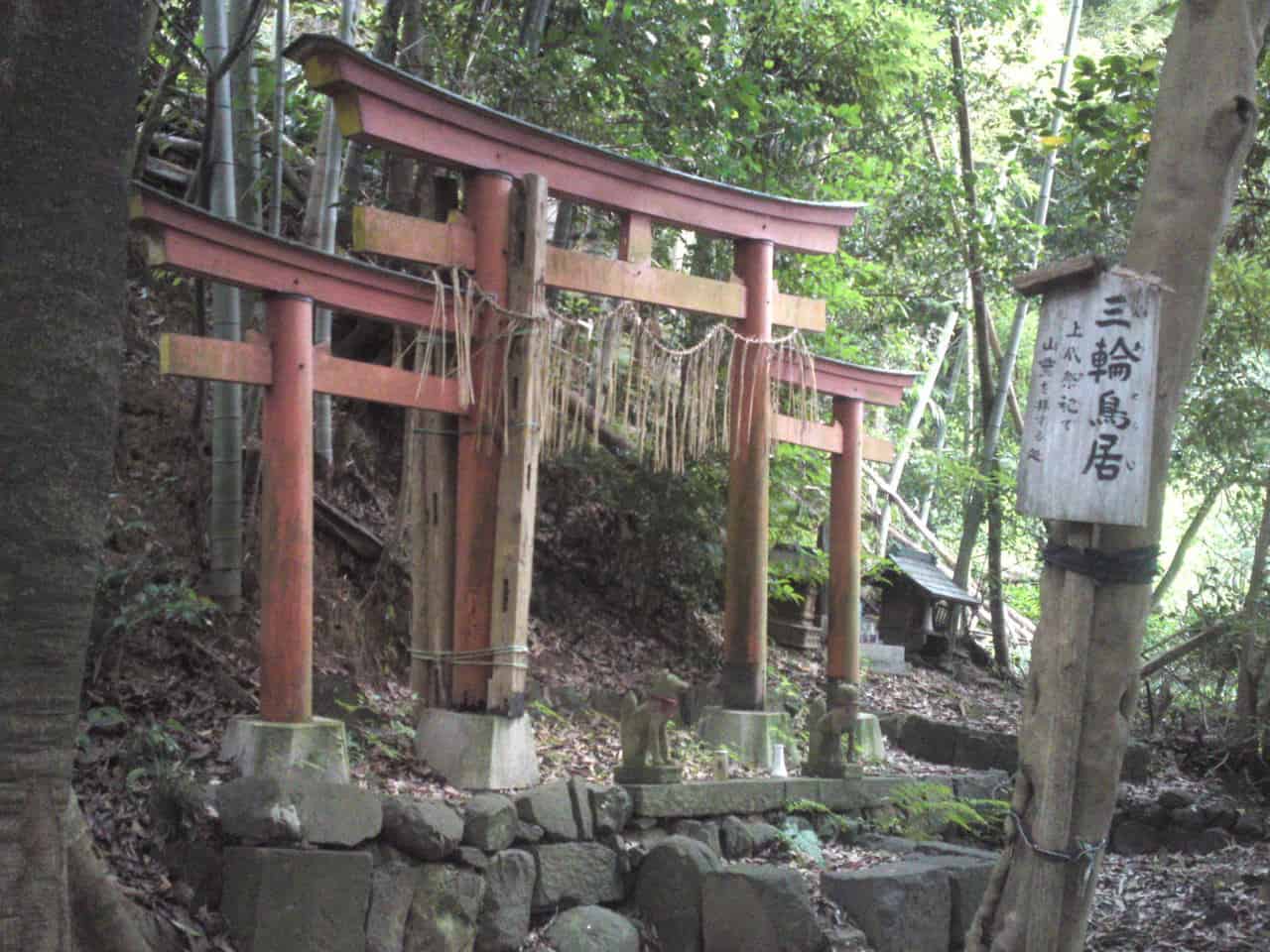
A very unusual triple torii gate on the way to Atago Shrine in Shizuoka City!
Entering the shrine compounds through one of the “torii”/sacred gates. While Shinto shrines and Buddhist temples share quite a few traits in common, such portals are to be found at Shinto shrines only. Likewise, sake in the form of large casks can be found only at a Shinto shrine while cemeteries are the sole responsibility of Buddhist temples.
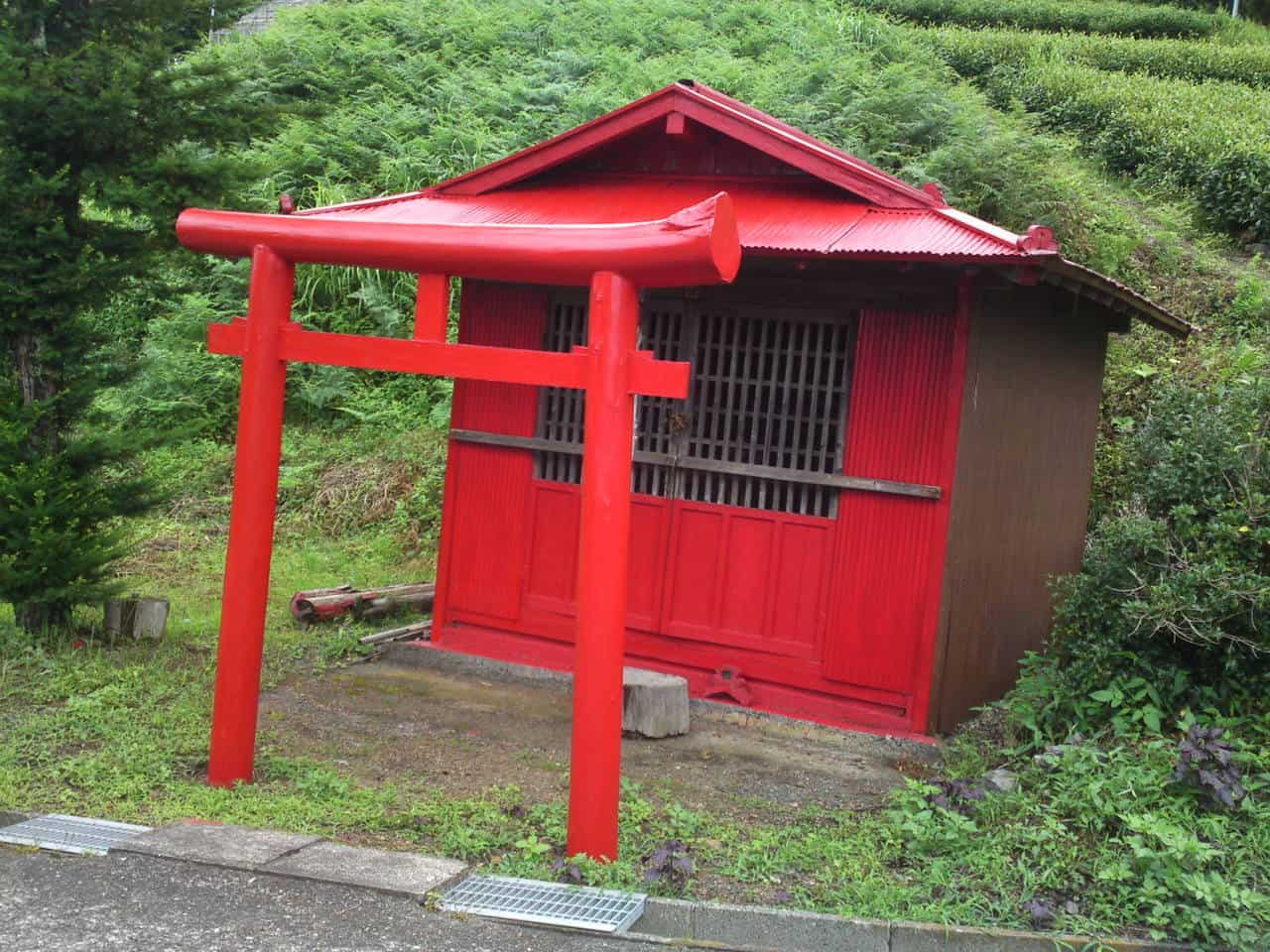
A tiny wooden torii with top curved beam made out of a real tree trunk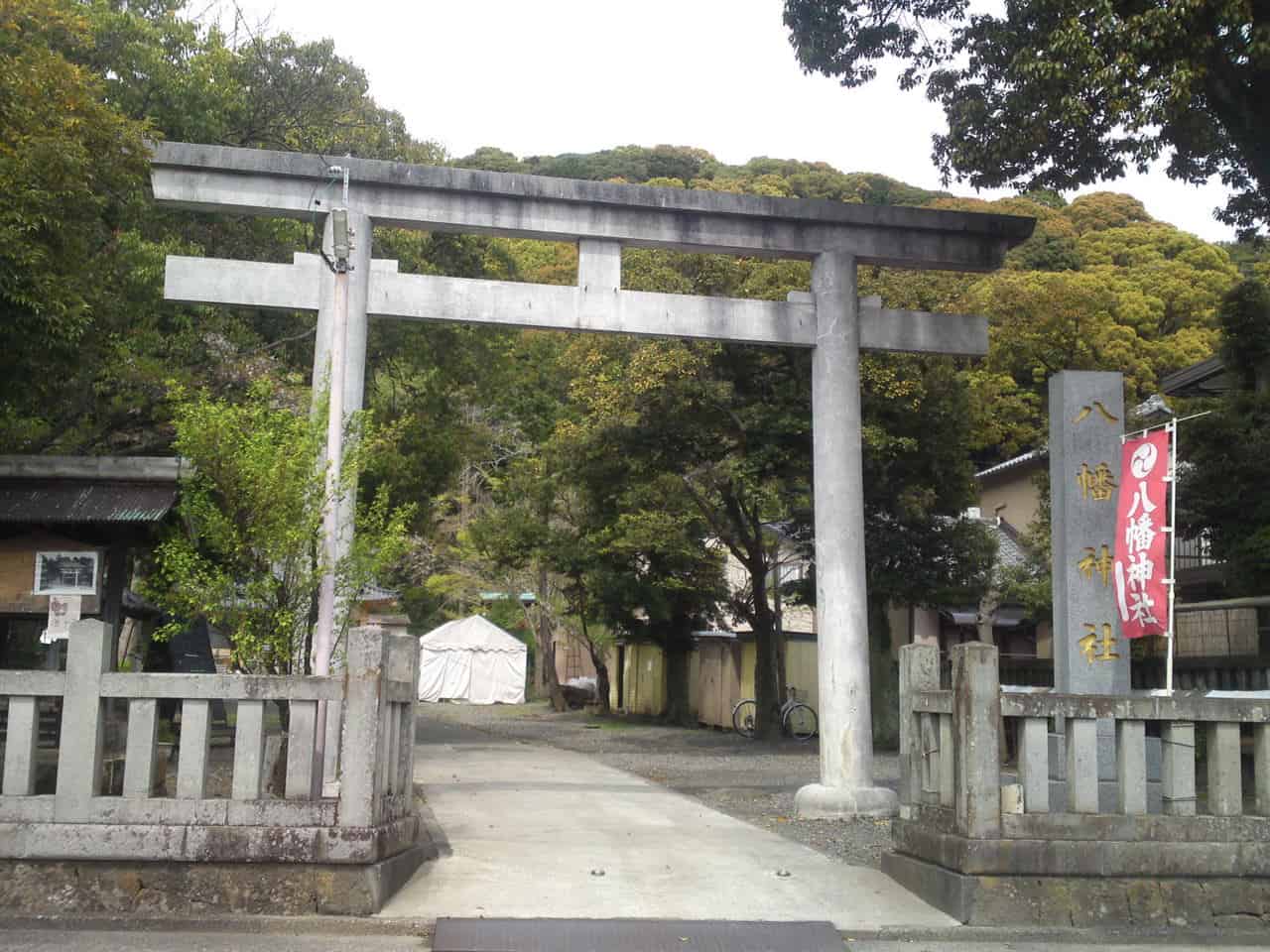
Torii with a straight top beam at Hachiman Shrine, in Suruga Ku, Shizuoka
The torii gate can be made either of wood (generally painted in red), stone, concrete or even metal and the top beam might be straight or curved.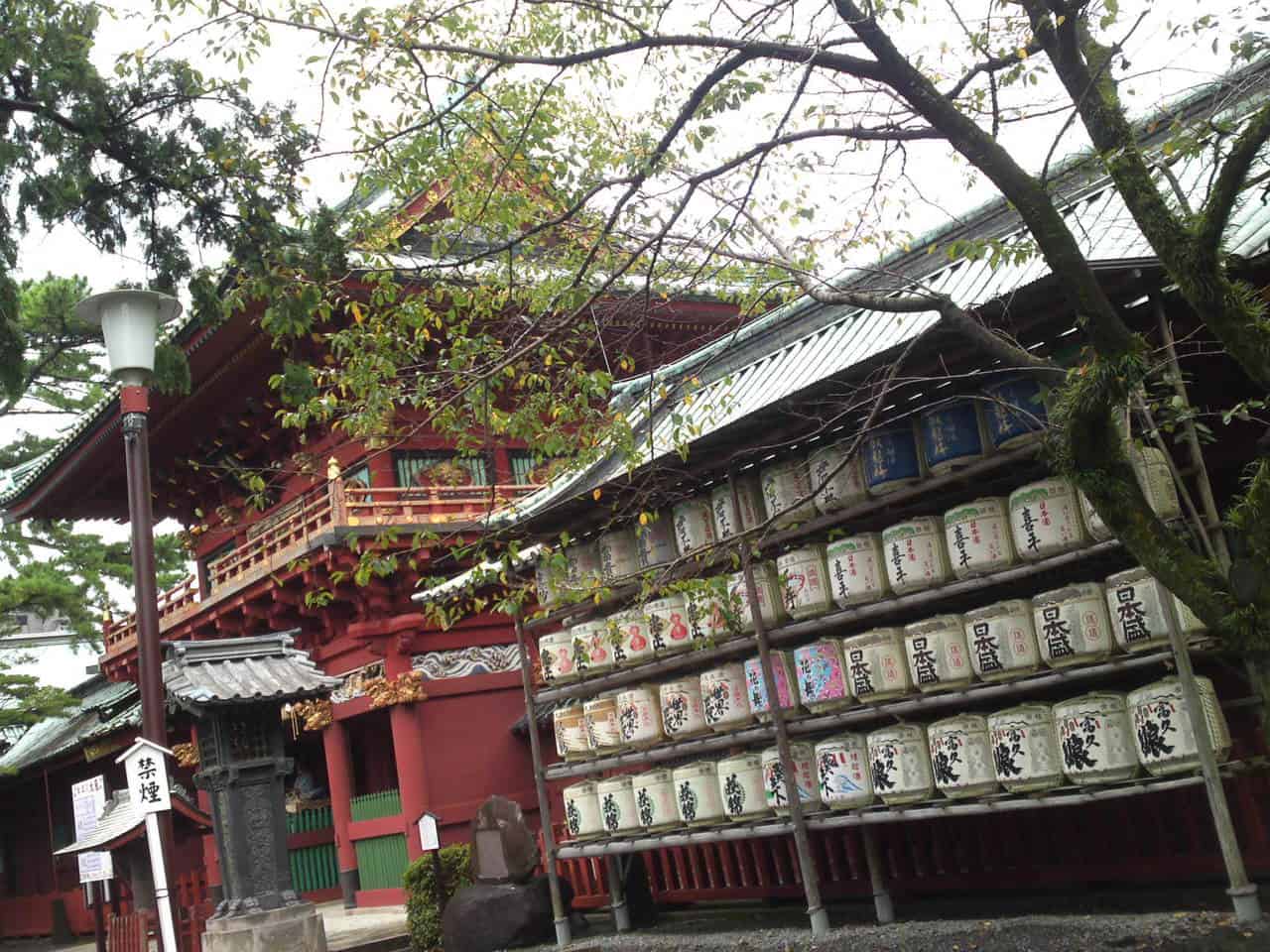
Sake offerings at Sengen Shrine in Shizuoka
A large Shinto shrine will often exhibit the sake casks donated for the New Year by rich worshipers. Sake/rice wine is considered the drink/nectar of the gods.
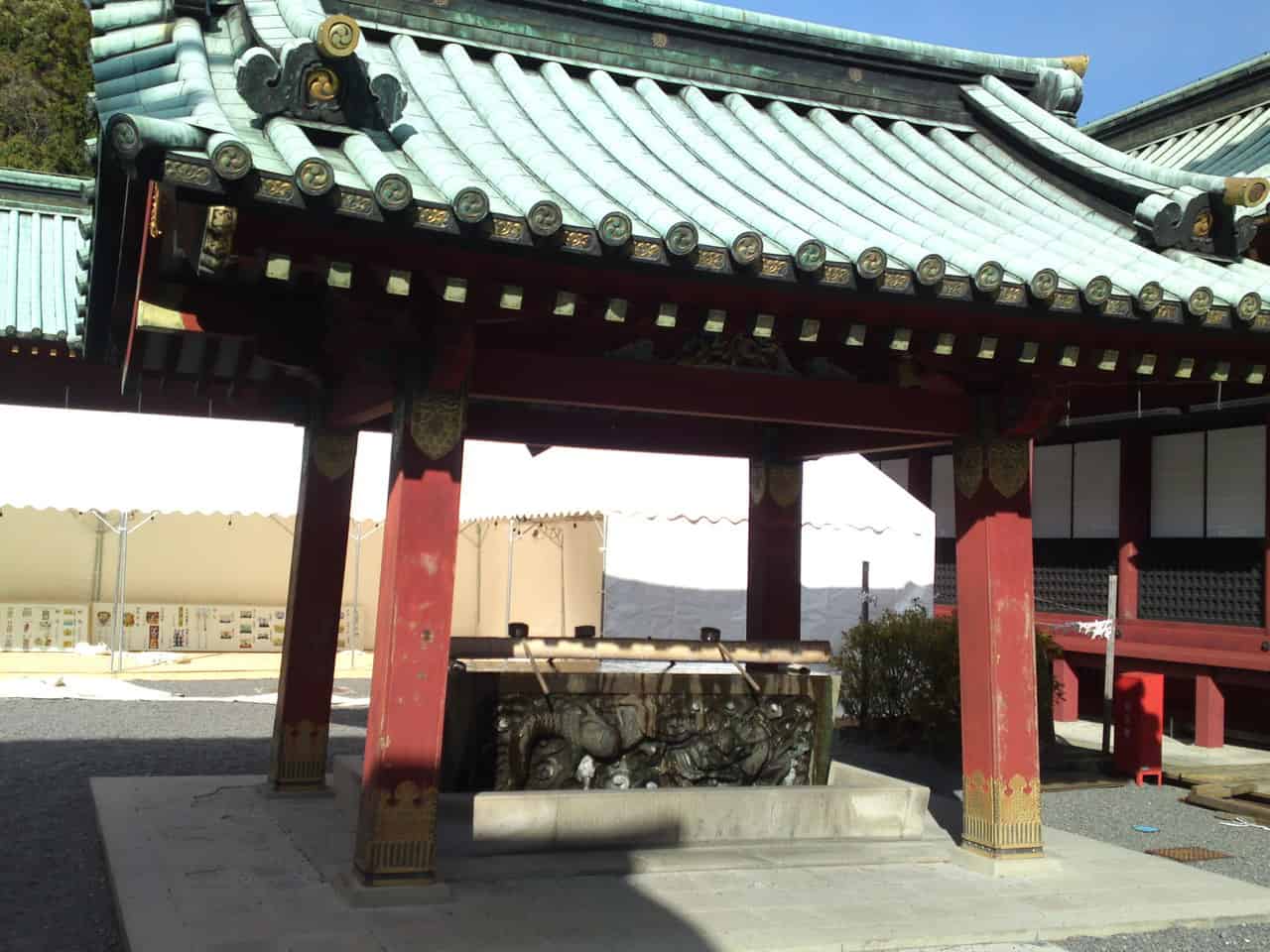
Hand washing at Sengen Shrine in Shizuoka
The Japanese usually wash their hands at a stone wash basin (although it can also been done with salt, sand, or sake/alcohol) called “chozuya”. A simple way to wash your hands is to scoop some water and run it over your left hand and then your right hand although some shrines will indicate how to do so properly.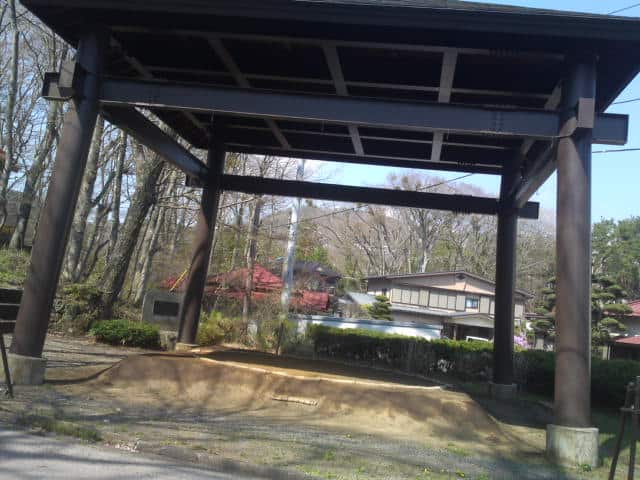
Sumo Ring at Suwa Shrine near Yamanaka lake, Yamanashi
Sumo has always been strongly associated with the Shinto faith and Japanese c ulture. Accordingly, you might stumble upon a Shinto shrine that will shelter a sumo ring where annual tournaments occur.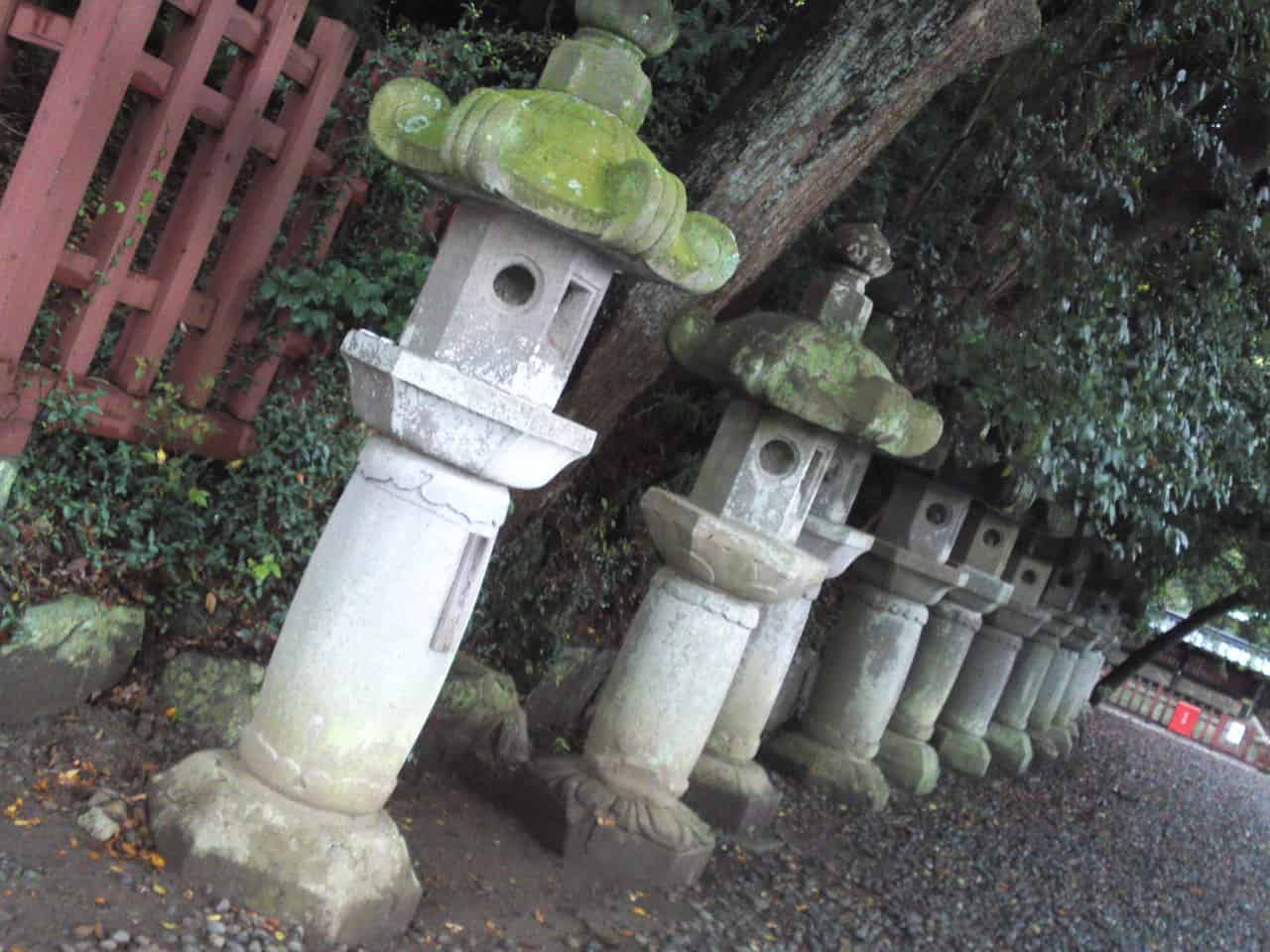
Stone lanterns
Stone lanterns/”ishidoro” of all kinds and sizes can be found at most shrines. The bigger the shrine, the larger the number.
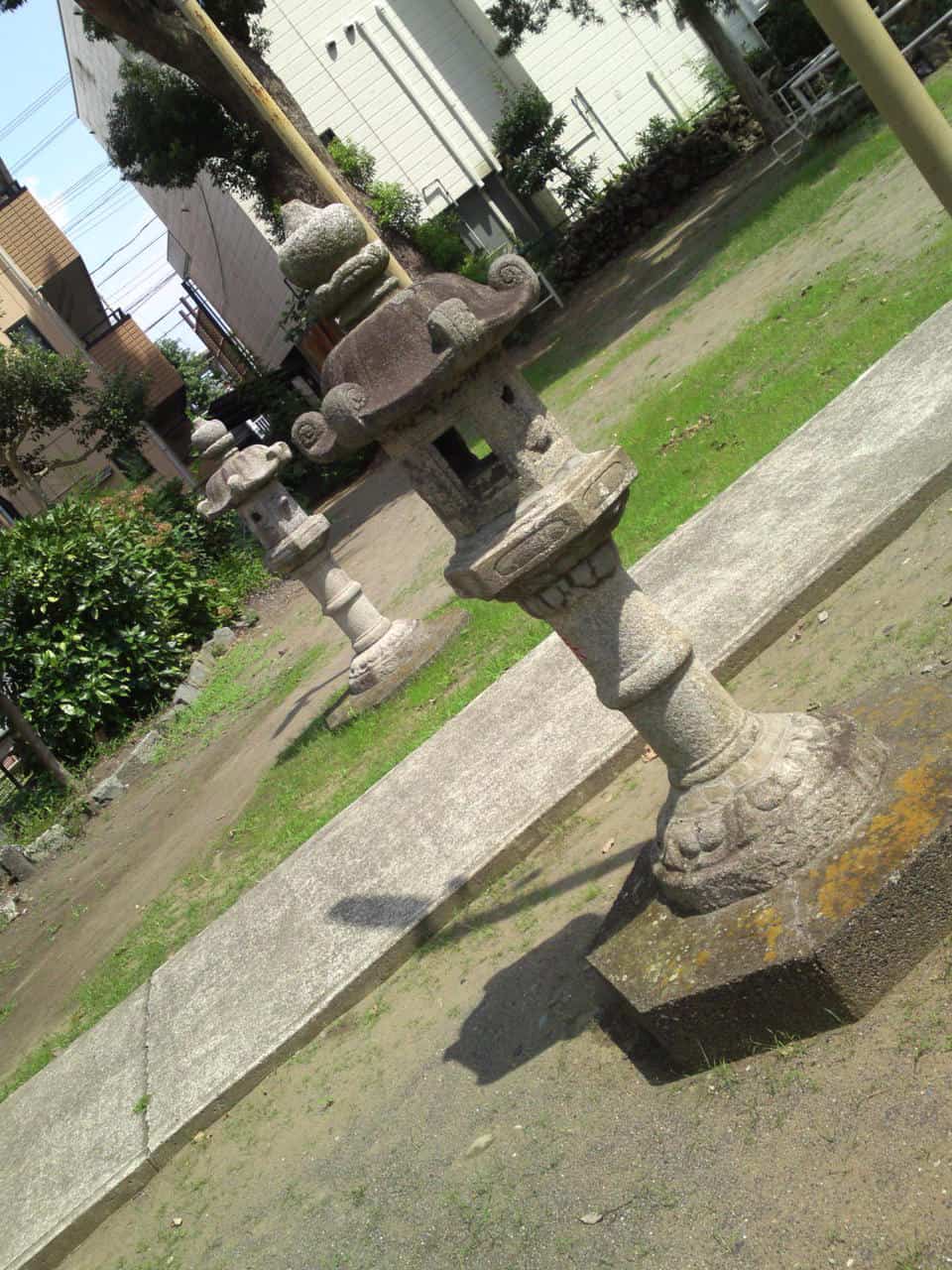
Monjyu Atago Shrine in Shimizu Ku, Shizuoka City!
They are hollow to hold candles (or bulbs) and sport various designs such as simple hollowed moon crescents or moon, or more elaborate carvings featuring clouds, mountains, deer and else.
Animal Guardians
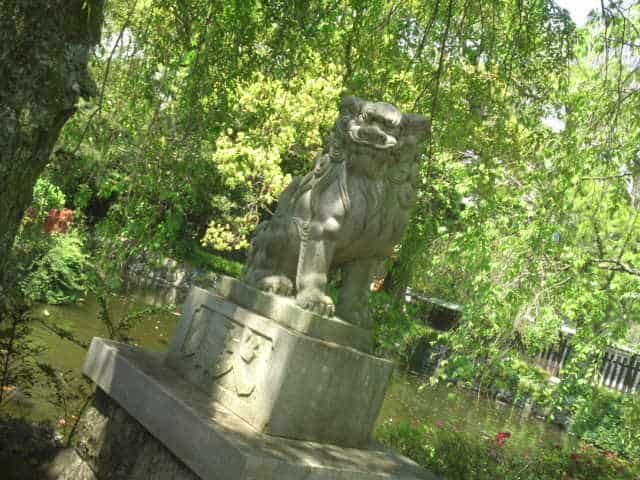
Animal guardians, closed mouth lion guard at Mishima Taisha Shrine
At Japanese Shinto shrines you will find all kinds of animal guardians usually in pairs, such as lions, foxes or monkeys and even birds, boars, and what else. The lion guardians are called “shishi” or “koma-inu” and appear under the shape of two statues facing each other, one with its maw closed, the other one with its mouth open. You might however discover them into other places such as under the eaves of the shrine.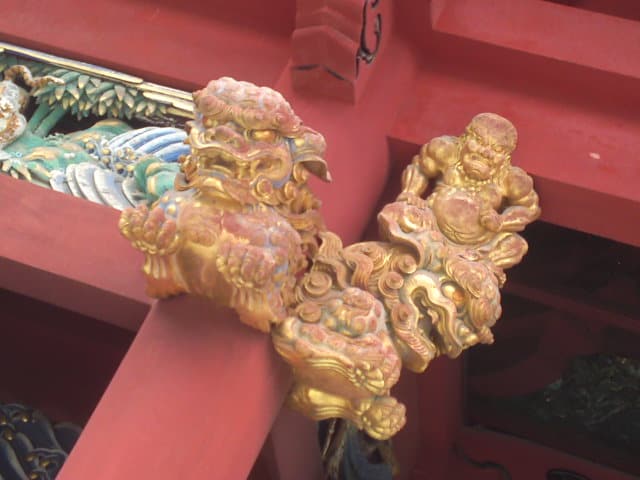
A rare lion guard mounted by a “oni”/goblin in Sengen Shrine in Shizuoka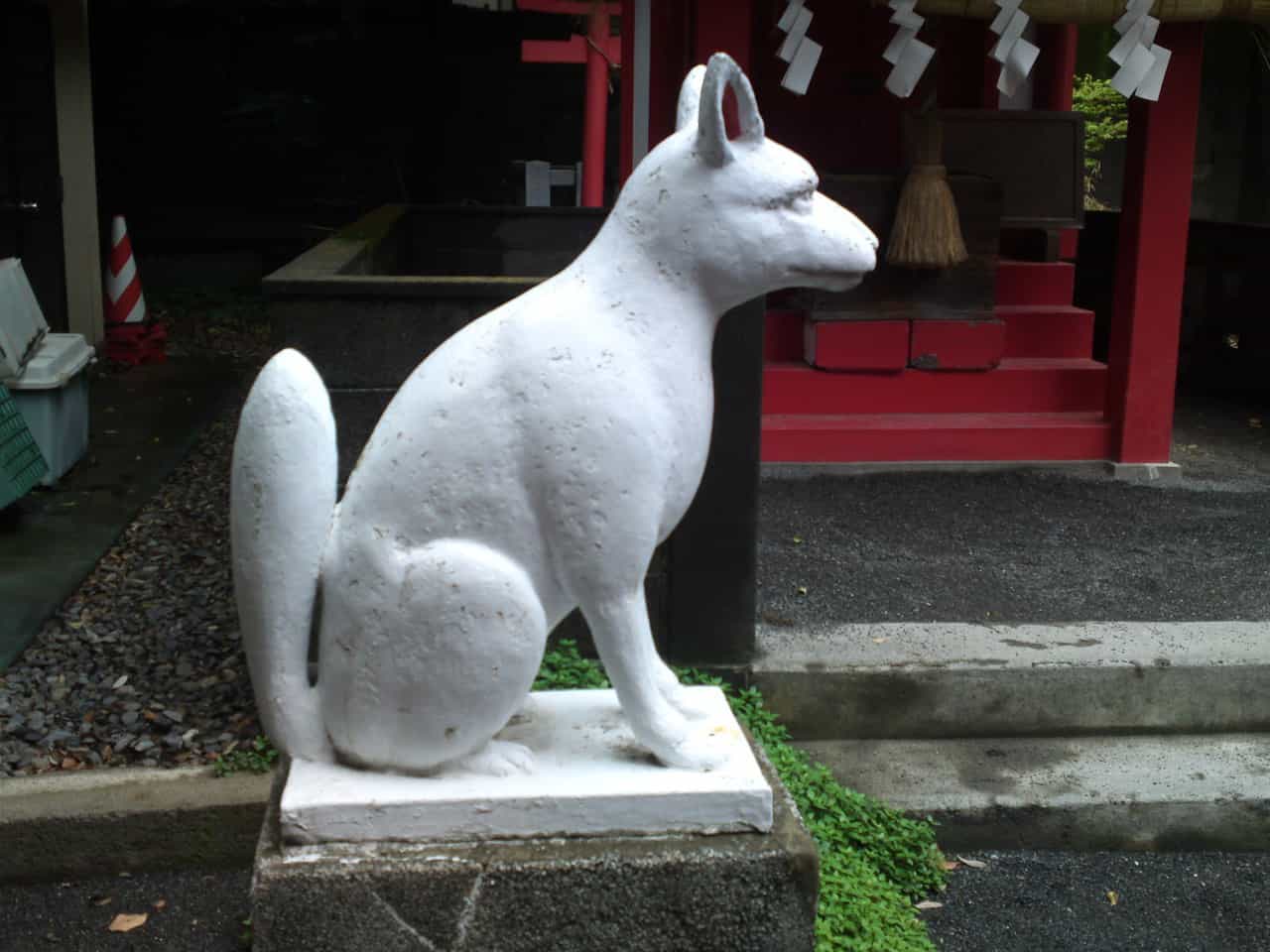
Ogushi Shrine, Shizuoka
Fox guardians/”kitsune” stand at all “Inari/Goddess of Agriculture” shrines.
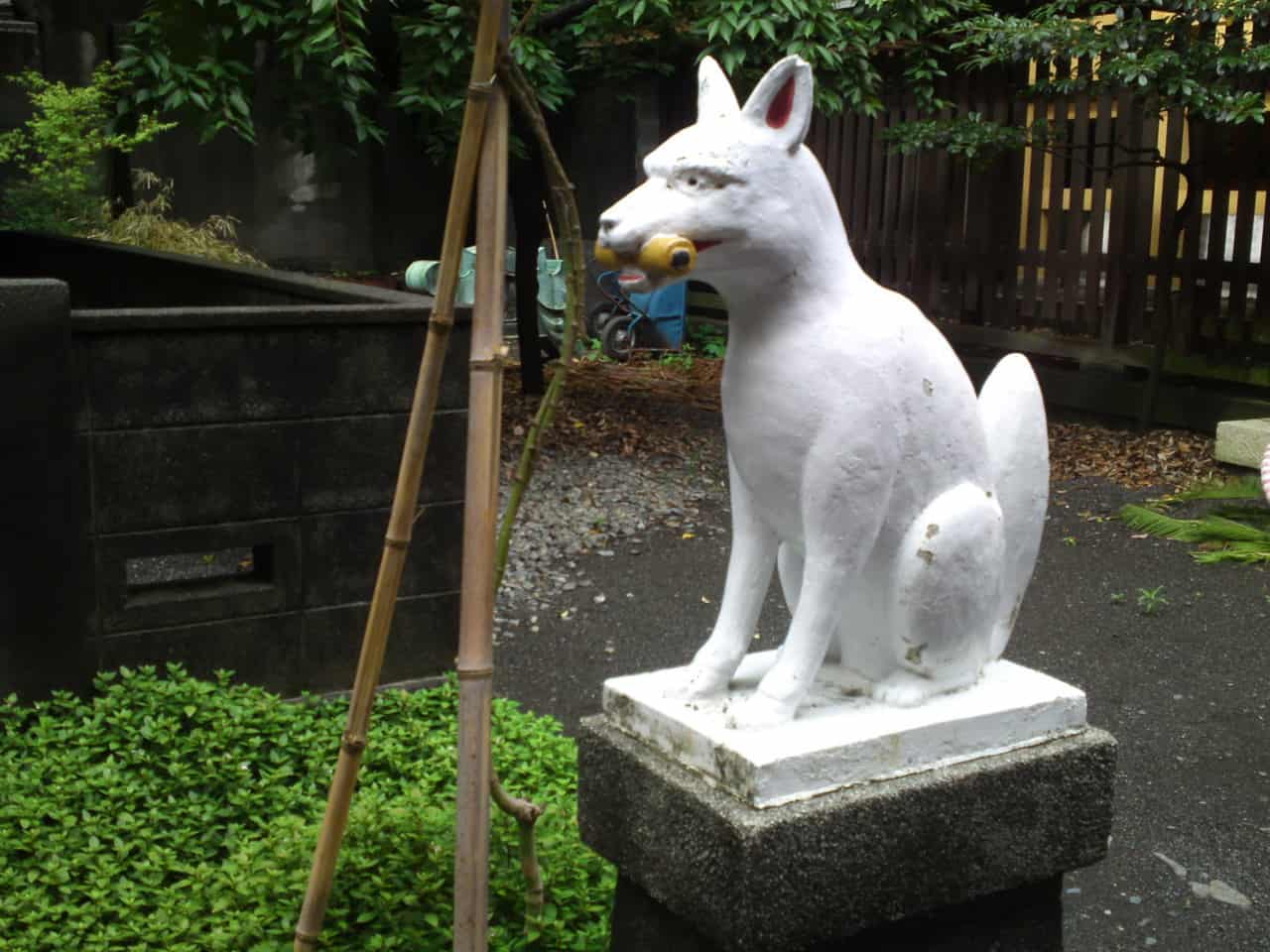
The other fox at Ogushi Shrine!
Similar animals to those at Shinto shrines can be found in Japanese Buddhist temples and therefore provide plenty of material for photographers:
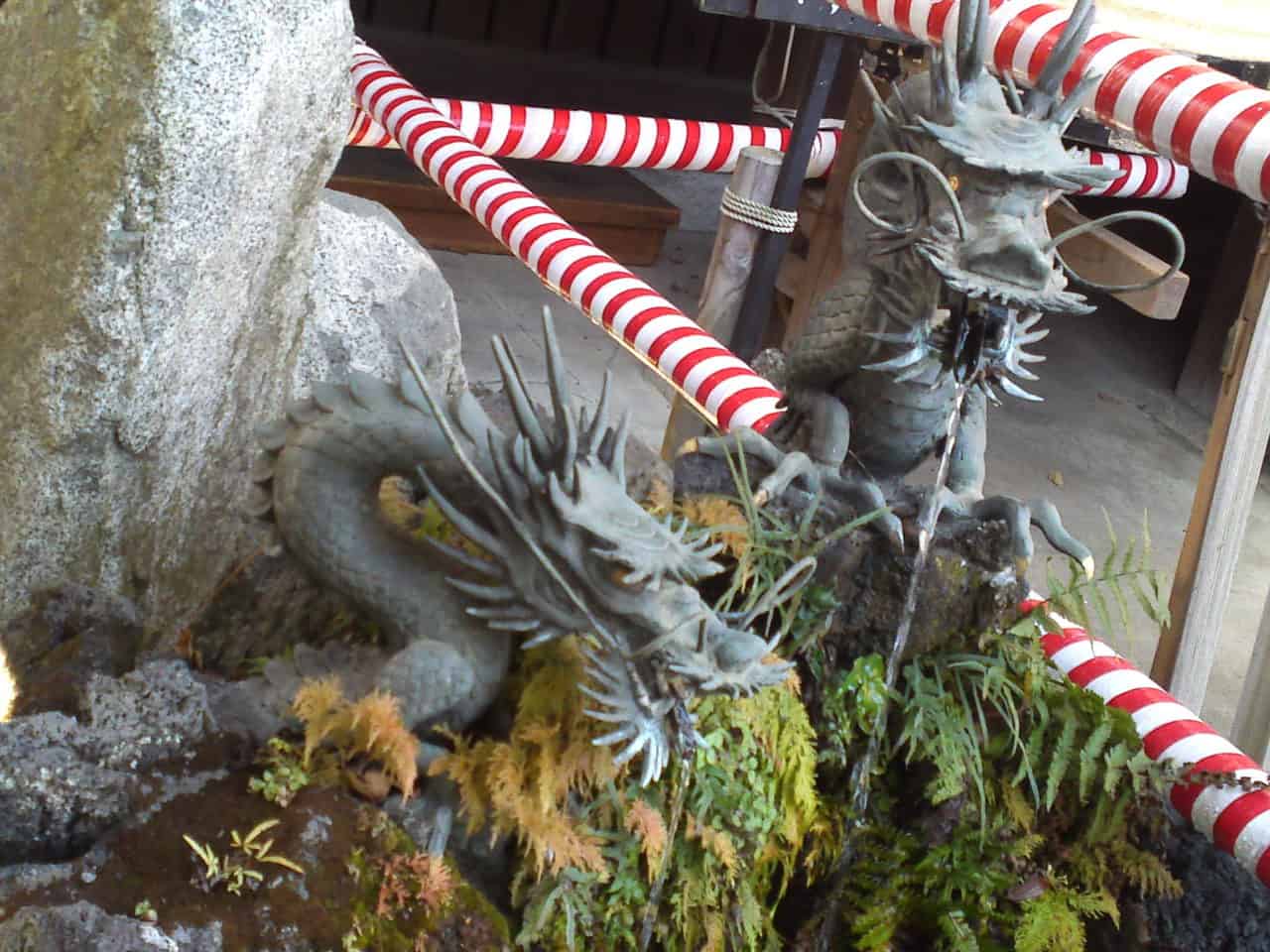
Dragons/”tatsu” at Ooi Shrine in Shimada City
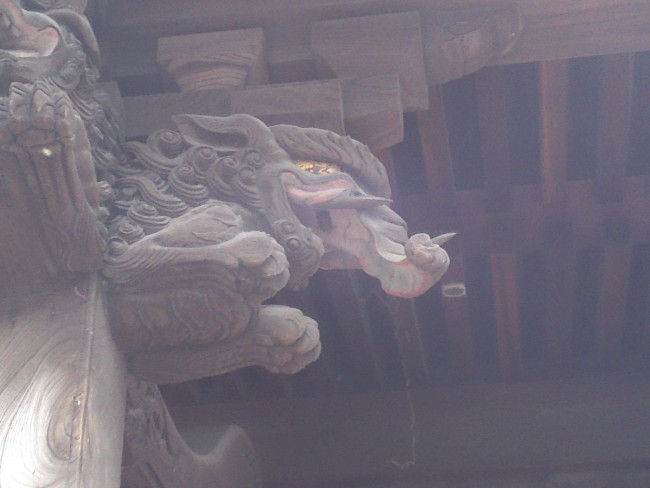
Elephant-like nightmare eaters/”baku” at Sui Shrine in Shimizu Ku, Shizuoka
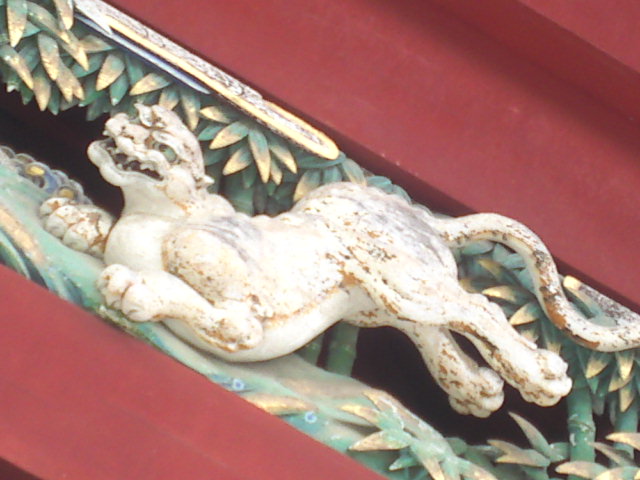
Tiger/”tora” in Sengen Shrine, Shizuoka
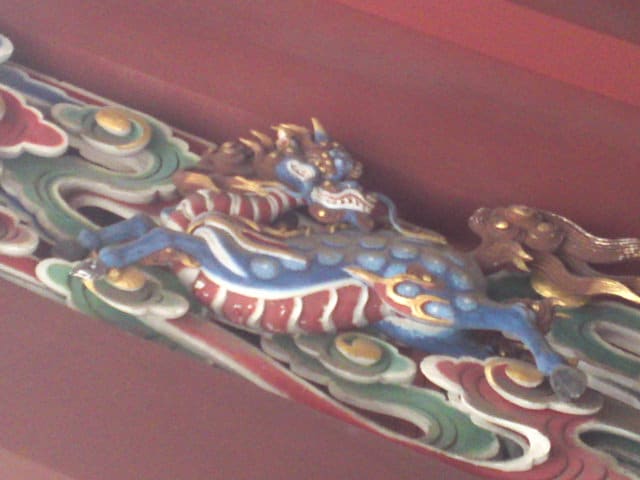
Dragon horse/”kirin” in Sengen Shrine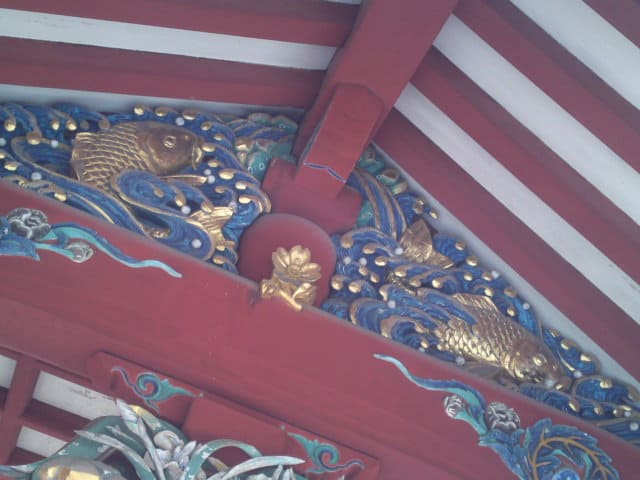
Carp/”koi” in Sengen Shrine, Shizuoka, and many, many more such as bulls and cows, horses, even frogs and kites (bird)!
Inomiya Shrine in Shizuoka
A Shinto shrine is typically marked with a “shimenawa”/rice straw garlands and “shime”/strips of white paper to ward off evil spirits, or placed around trees/objects to indicate the presence of a “kami”/God. Made of rice straw or hemp, the rope/garland is called “nawa”. The pieces of white paper that are cut into strips and hung from these ropes (often hung from ropes on Torii gates as well) are called “shime” or “gohei”.
Worship halls
A full-fledged Shinto shrine is typically a two-part structure:
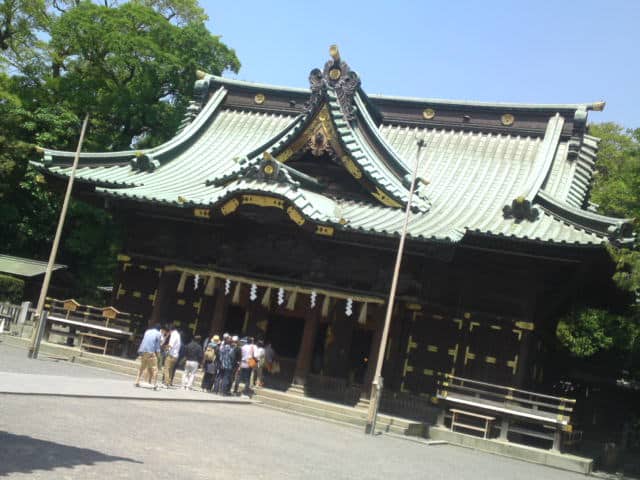
Mishima Taisha Shrine
(1) the shrine’s Haiden, or oratory, before which worshipers say prayers.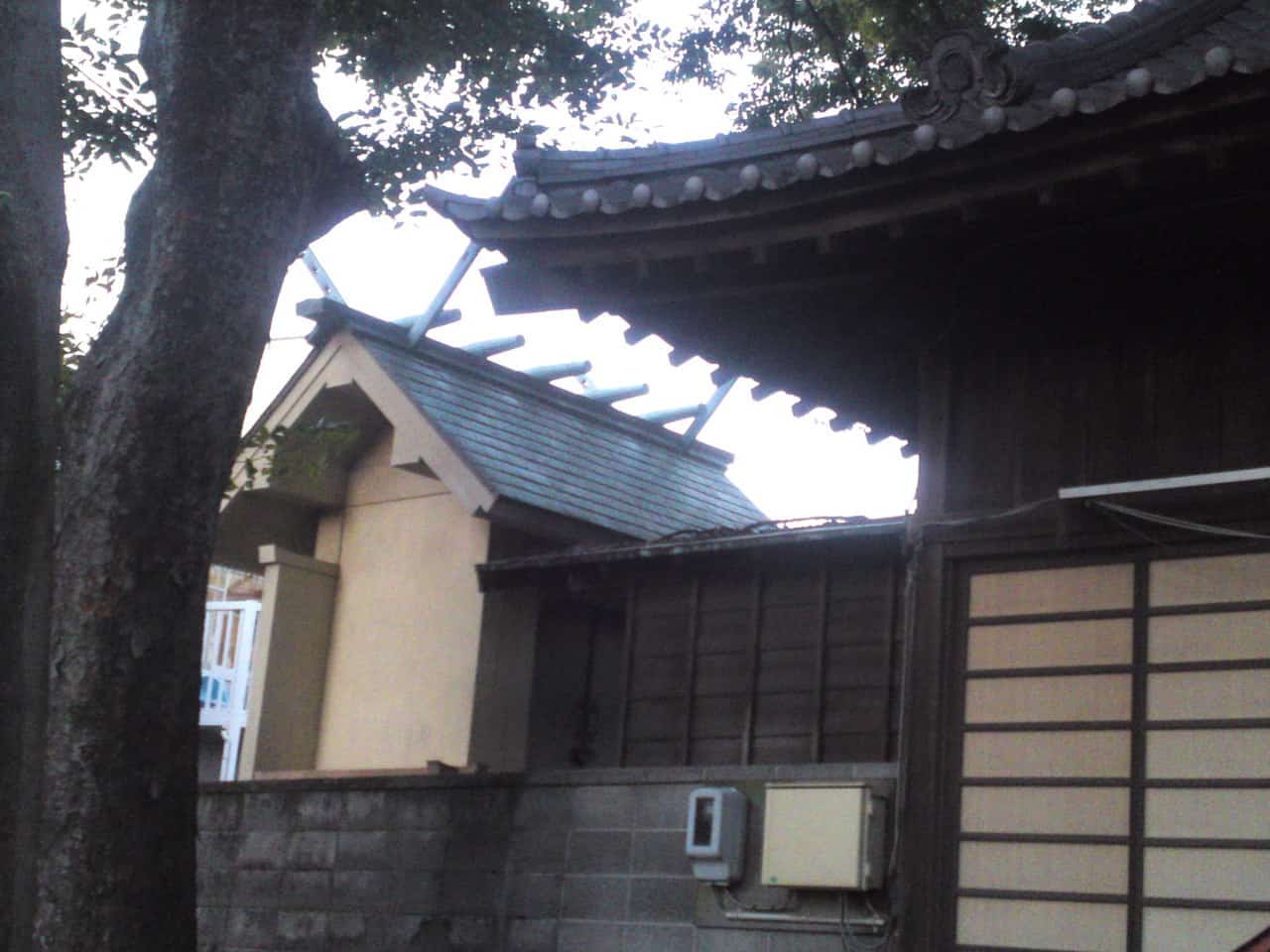
Ishida Shrine in Suruga Ku, Shizuoka
(2) the Honden, or inner sanctum, the main dwelling of the deity. The Honden is built behind the Haiden.
In a shrine, also often finds a third structure between the Honden and Haiden called the Heiden (Hall of Offerings), open only to the priests when they are making offerings on behalf of devotees.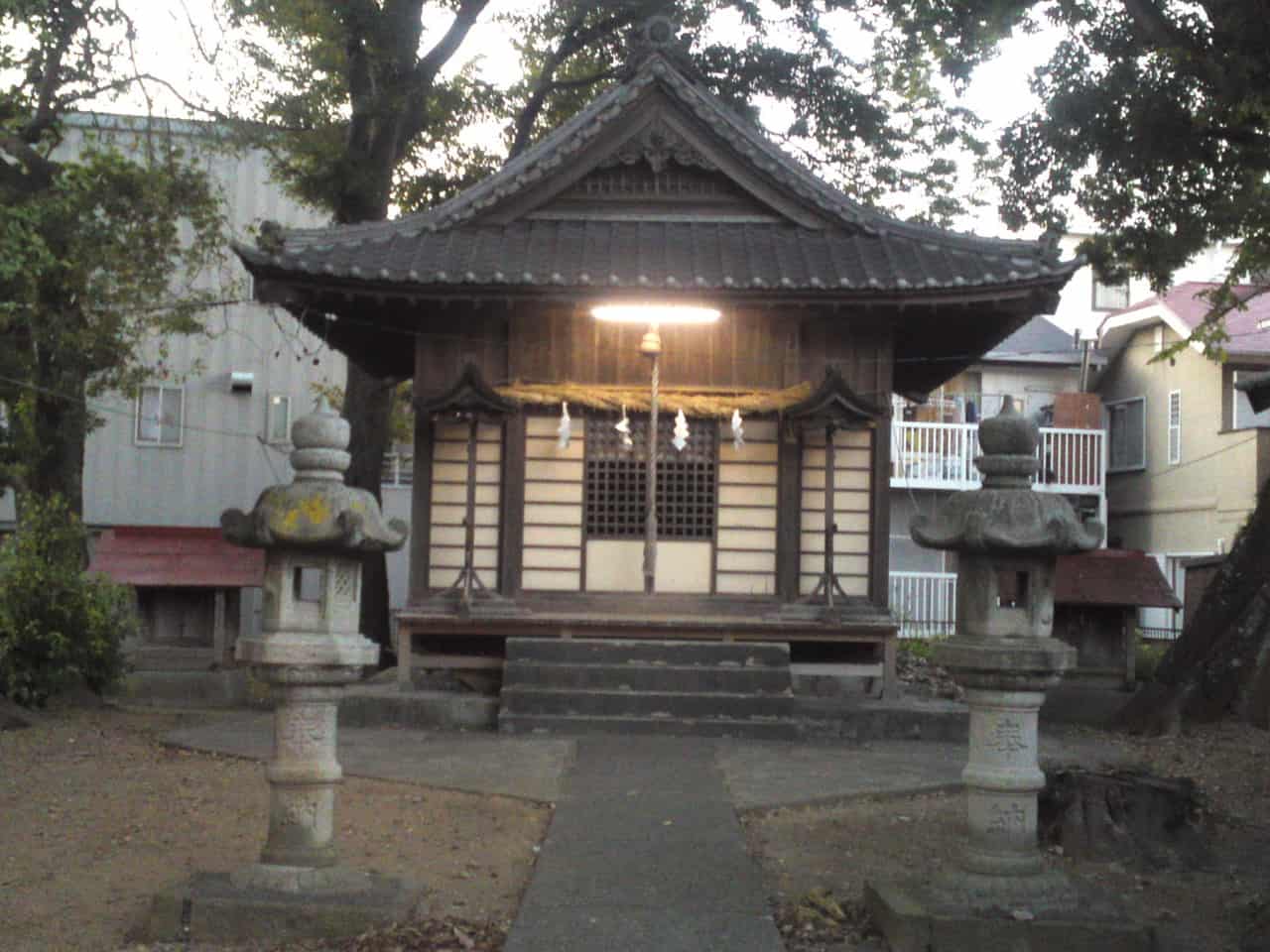
Ishida Shrine in Suruga Ku, Shizuoka
Shinto architecture
Japanese Shinto architecture is usually “down to earth,” blending rather than conflicting with the natural setting. A shrine are typically stand-alone complexes, but shrines can often be found within Buddhist temples as well. Shinto roofs are usually peaked, and almost everything is painted red (but not always). The presence of a torii (gate), two shishi (lion-dog) guardians, shimenawa (ropes with white paper), and the absence of a cemetery, are all telltale signs of Shinto shrines.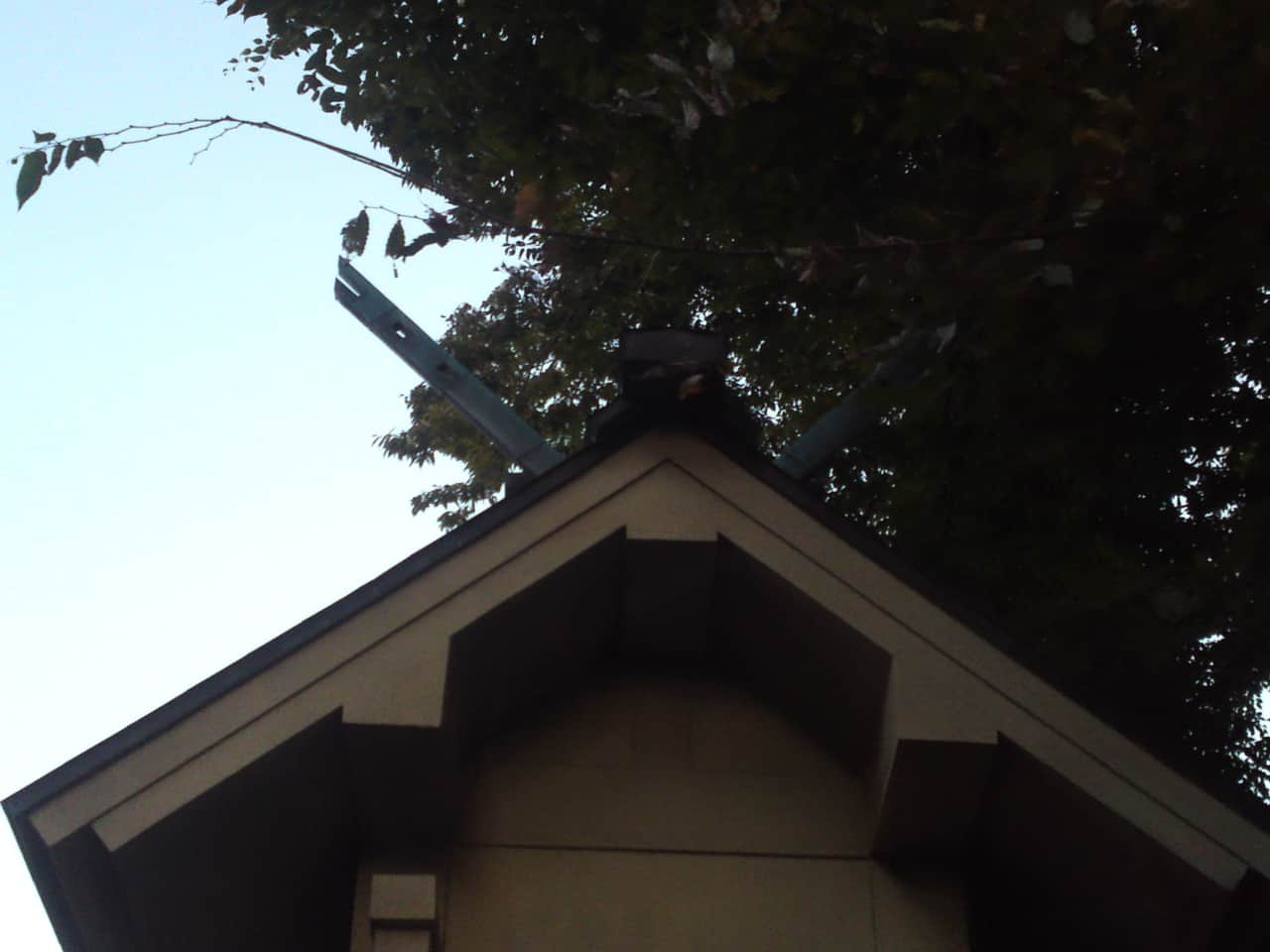
Ishida Shrine in Suruga Ku, Shizuoka
You can tell whether the deity housed at the shrine is male or female by looking at the roof of the shrine. On some shrines (not all though) you may find horn-like cross boards on the roof. If the ends of the boards are cut so the flat edges face up, then the deity is usually female. However, if the boards are cut so the flat edges face sideways, the deity is usually male.
Praying bells and money offering boxes
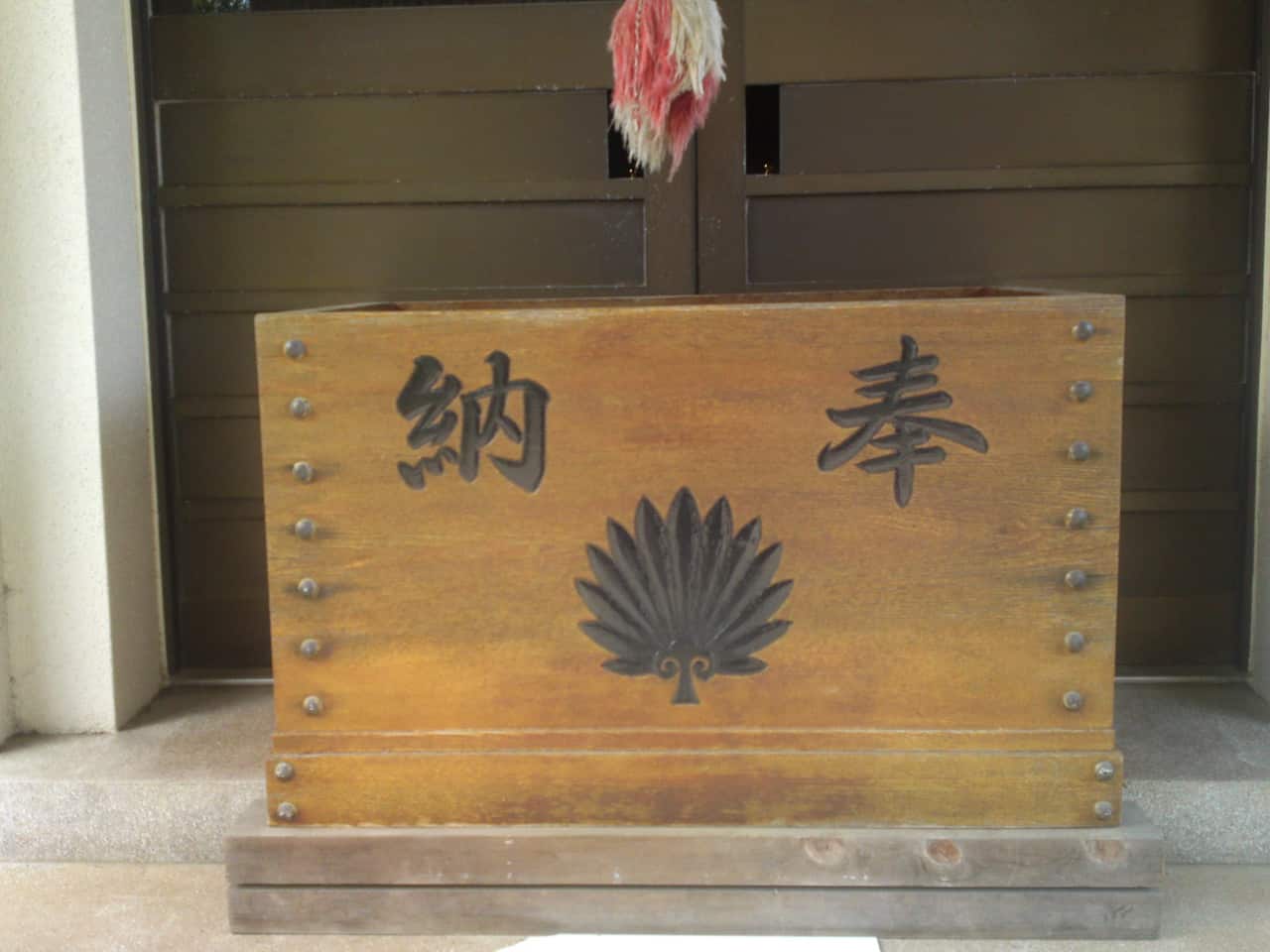
Money offerings box in Shirahige
Shrine in Shizuoka
Worshipers usually first throw coins into the money offering box/”saisen”, clap their hands to call the God’s attention, pull the bell rope and pray before bowing away.
Lucky Charms, Votive Plaques, and Fortune Telling
A visit to a Japanese shrine offer many diversions to visitors – and in most cases, these diversions involve superstition and magic. Nearly all shrines sell talismans to bring good luck or keep evil away: “O-mamori”/protective amulets, “O-inori”/paper prayers, “Hamaya”/evil-destroying arrow, “Ema”/votive plaque,”Omikuji”/lucky or unlucky oracle, and more!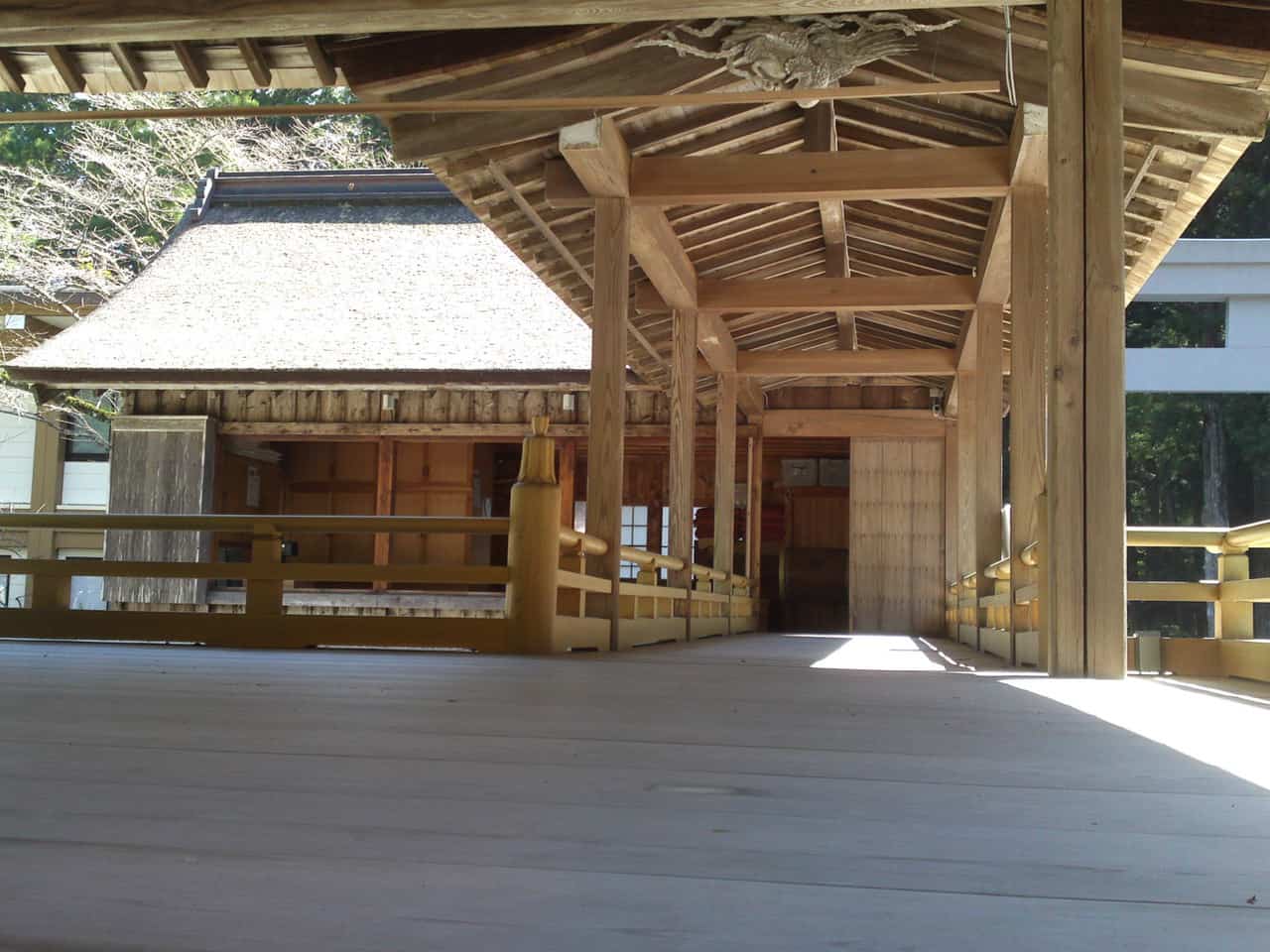
Noh stage at Okuni Shrine in Mori Machi, Hamamatsu
A large Shinto shrine might also include on it’s grounds platforms of various size and complexity to hold traditional sacred dances called “Kagura” and even Noh theater plays.
And this is only the start of your adventure with Shinto shrines!
[cft format=0]
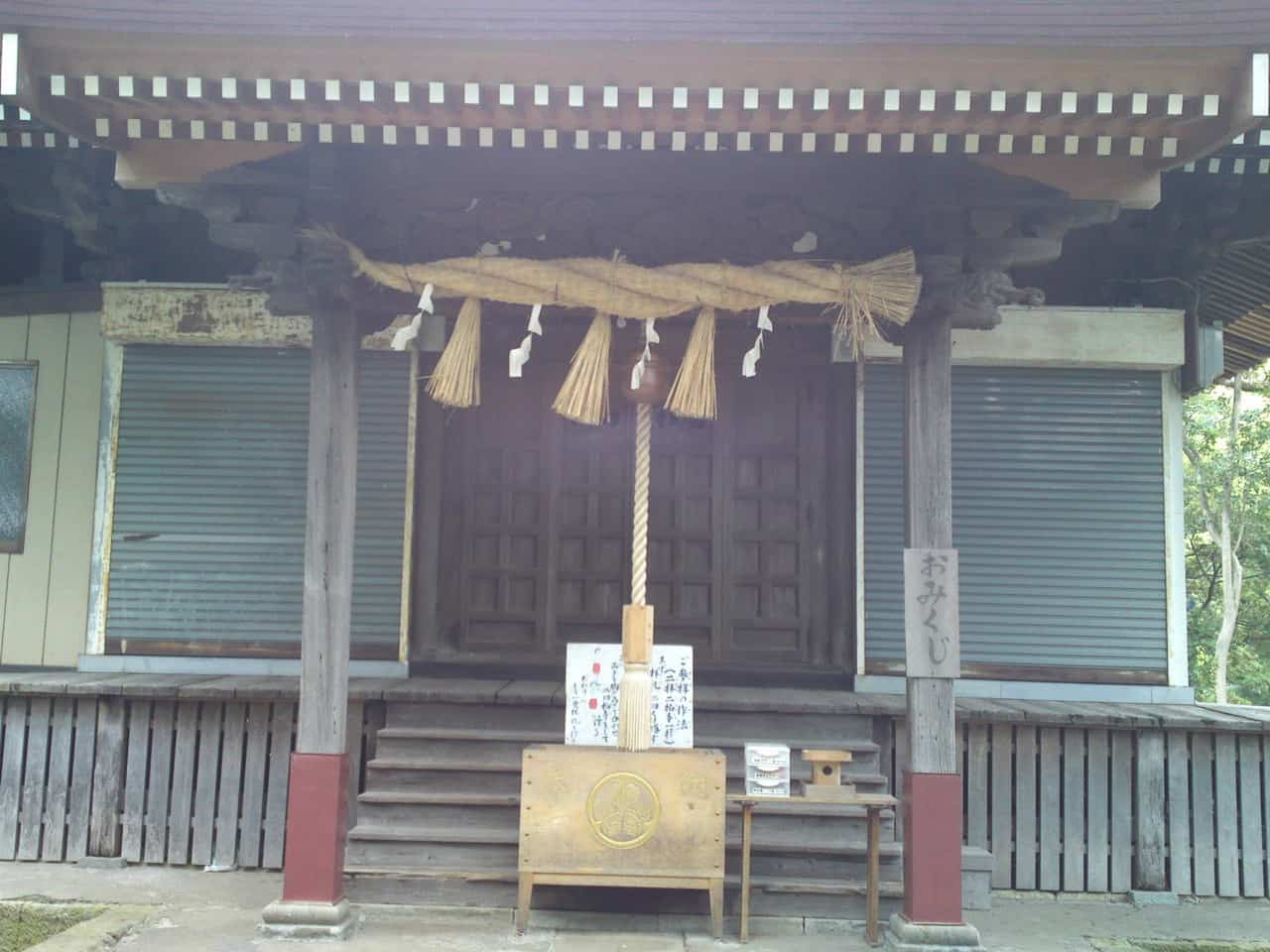


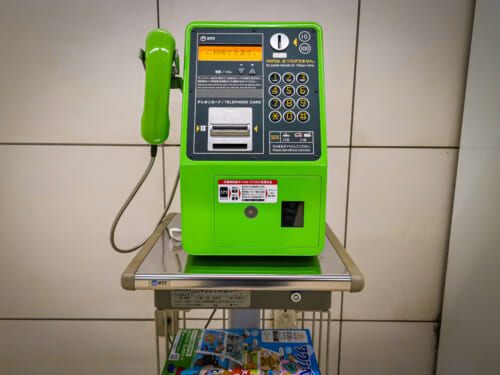
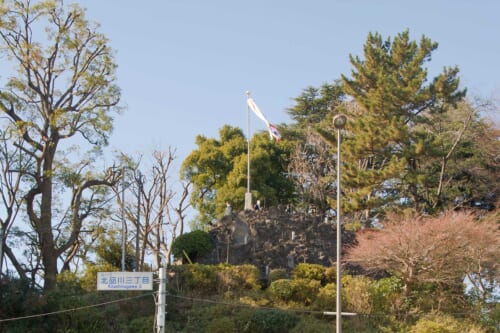

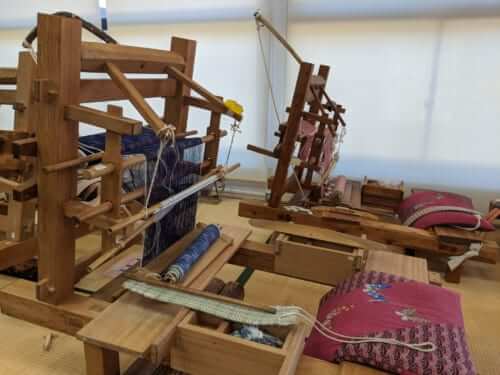
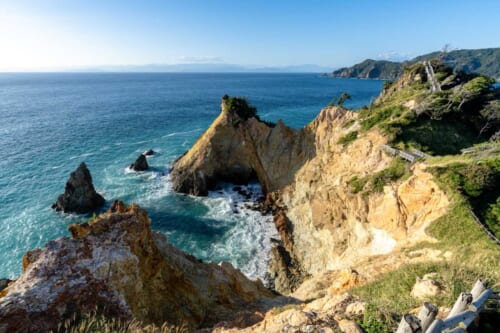
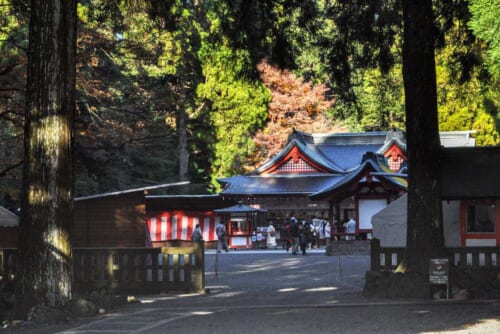
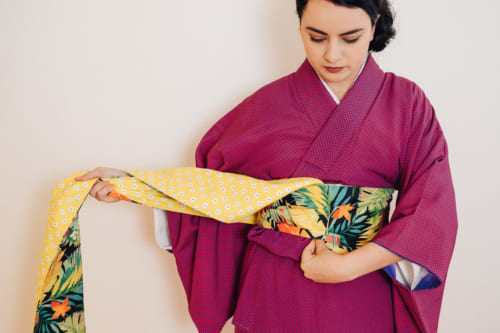


No Comments yet!